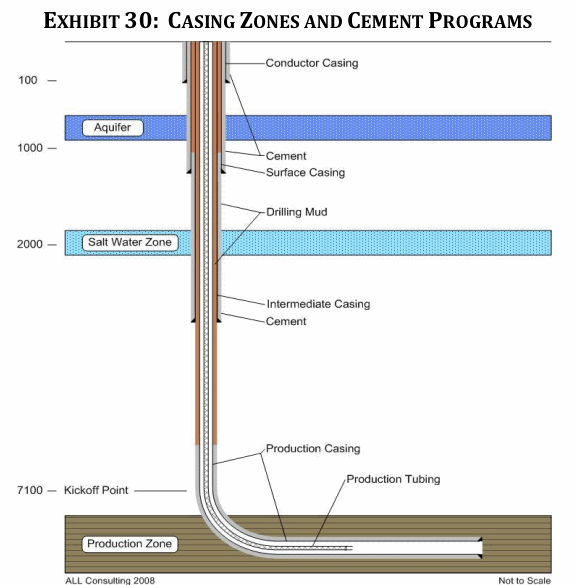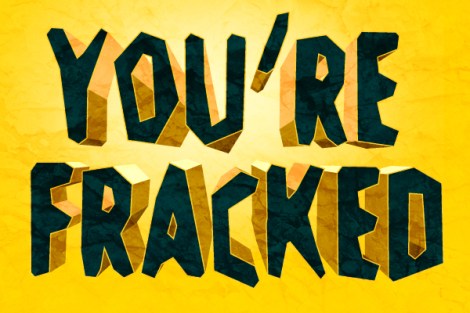
“Fracking”: It sounds more like a comic-book exclamation (kapow! boom! frack!) than a controversial method for extracting natural gas and oil from rock deep underground. By turns demonized as a catastrophic environmental threat and glorified as a therapy for our foreign oil addiction, fracking has become a flashpoint in our national energy policy.
First developed in the 1940s, fracking — literally, “hydraulic fracturing,” or “smashing rock open with lots of water” — only began to boom around 2005, but today, it’s used in nine out of every 10 natural gas wells in the U.S. As many as 35,000 wells are fracked each year [PDF], according to the Environmental Protection Agency (EPA). And shale gas (often fracked) now accounts for 15 percent of total U.S. natural gas production, up from virtually nil a few years ago.
Scientists assure us that fracking can be done safely — at least in theory. They are still working to understand the long-term implications of using this technology at large scale in the real world, however, where things spill, accidents happen, and people have their health, homes, schools, airports, groundwater, and even cemeteries to worry about.
We know scientists aren’t the only ones looking for answers. So below, we tackle six key questions about fracking.
1. How does fracking work?
Hydraulic fracturing involves cracking rock formations by pumping fluid into wells at high pressure, forcing oil or gas out of the rock. It’s also known as hydrofracking and fracing, and, most commonly, fracking (not to be confused with the colorful suggestions of autocorrect programs, “franking” or “freaking”).
Done right, fracking can squeeze natural gas from layers of rock that would otherwise be too difficult or costly to exploit. Often this rock is a very tight, clay-rich, sedimentary mud stone known as shale — for example, the Marcellus Shale formation in New York, Pennsylvania, West Virginia, Ohio, and Maryland; the Bakken Shale in North Dakota; and the Barnett Shale in Texas. Drillers also use fracking to release gas from fine-grained sands known as tight sands, and to free methane from coal beds.
It takes more than a garden hose to get this job done. Frackers pump up to 4 million gallons [PDF] of fluid as far as 10,000 feet below ground at up to 4,200 gallons per minute. The pressurized fluid creates tiny cracks, or fissures, in the shale around a borehole far below ground level. Gas flows out of the rock and up to the surface.
The wells’ L shape, enabled by advances in “horizontal drilling” over the last decade, makes it possible to tap many small pockets of gas scattered across wide, thin rock layers. Horizontal drilling, combined with fracking, makes it worthwhile for companies to tap gas stores that just wouldn’t have been economical a few years back. And none too soon, since we’ve already harvested [PDF] much of the low-hanging fruit (read: the big, easily tapped gas deposits).
2. What’s in that fluid?
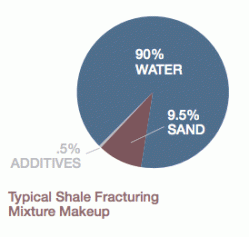 There are three basic ingredients in fracking fluids:
There are three basic ingredients in fracking fluids:
- Water: An Olympic-size swimming pool holds about 660,000 gallons of water, and a single fracking well can use seven or eight times that amount. Energy companies often buy water from farmers, lease surplus water from municipalities, or buy treated wastewater.
- Sand: Grains of sand, acting as “proppants,” keep cracks in the shale open so gas can flow out of the rock and up the well. In place of sand, some drillers use ceramic pellets or other particles.
- Chemicals: A chemical cocktail of “additives,” in industry speak, helps to dissolve minerals, reduce friction, prevent corrosion, thicken the fluid (so it can transport the sand), clean out debris, prevent clay from swelling, and fight bacteria, among other jobs.
At various stages, the list of chemical ingredients may include hydrochloric acid, petroleum distillates, ammonium persulfate, calcium chloride, boric acid, citric acid, borate salts, and many more additives. Exposure to high amounts of some common frack-fluid chemicals, like ethylene glycol (a key antifreeze ingredient), have been linked to serious health problems, such as kidney, heart, and nervous-system damage. Others, like sodium chloride (table salt) and guar gum (a common food thickener derived from beans) are generally benign.
3. Do those chemicals get into drinking water?
Maybe you’ve seen this startling scene from the Oscar-nominated film GasLand:
As it turns out, the faucet here was spewing naturally occurring methane, which is difficult to attribute to fracking in a direct, conclusive way. Nonetheless, people’s concern that fracking can taint our drinking water with unsavory and possibly dangerous elements is not unfounded.
A study published in May 2011 in the peer-reviewed Proceedings of the National Academy of Sciences found a link between methane in drinking water supplies and proximity to shale gas drilling. Seven months later, the EPA said for the first time that chemicals used in fracking had been found in drinking water in Pavillion, Wyo., home to hundreds of natural gas wells. And in July 2012, the U.S. EPA said its tests of wells around Dimock, Penn., had revealed barium, arsenic, or manganese at levels high enough to present health concerns in the water supplies of five households.
Remember, fracking involves millions of gallons of fluid for each well. That fluid must be transported via pipelines or trucks and stored in tanks or ponds prior to injection into the well. There are lots of opportunities for spillage (of the wastewater, as well as fracking chemicals like hydrochloric acid). Shoddy well casings can allow gas to leak out of the well and into water aquifers. Equipment failures and well blowouts can send wastewater flowing into nearby creeks.
Anywhere from 30 to 70 percent of the original fluid volume [PDF] doesn’t come back out of the well right away. It remains “stranded” underground for years. The wastewater that does bubble to the surface, which can now contain salts, minerals, and low-level radioactive materials leached out of the soil and rock, must be recycled or disposed of. Most frequently, this water is injected back into the earth, though it is sometimes pumped to ill-equipped municipal sewage plants — which can be bad news for rivers. (The EPA is now working on standards for shale gas wastewater treatment and disposal.)
4. Does fracking cause earthquakes?
It can. According to the U.S. Geological Survey (USGS), fracking “causes small earthquakes, but they are almost always too small to be a safety concern.”
Of course, residents near fracking sites may have a different standard for “concern.” Just ask around Lancashire, in the U.K., where two small earthquakes registering 2.3 and 1.4 on the Richter scale in 2011 have been linked to fracking. According to the International Energy Agency [PDF], fractures in this instance just so happened “to intersect, and reactivate, an existing fault.”
Re-injecting wastewater into fracking wells can also cause earthquakes that are “large enough to be felt and may cause damage,” according to the USGS. Scientists have fingered wastewater injection as the culprit behind quakes last Christmas Eve and New Year’s Eve (magnitude 2.7 and 4.0, respectively) in Youngstown, Ohio, which didn’t used to be earthquake country.
5. Is there an environmental upside to fracking?
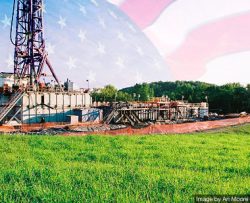
Original photo by Ari Moore.
Perhaps. Fracking helped produce so much natural gas that a supply glut drove gas prices down to a 10-year low in the winter of 2011-2012, according to the EIA, and that has made it more competitive with other fuels. That’s good news if you consider that natural gas does burn cleaner than either coal or oil. It produces less carbon dioxide, a greenhouse gas, and less sulfur dioxide, a component of acid rain and an air pollutant linked to respiratory problems including asthma and emphysema. In fact, when lower gas prices made the fuel more competitive with coal for electricity this year, it helped the U.S. reduce its overall greenhouse gas emissions.
But when you look at the whole natural gas package, from production through use and waste disposal, it’s clear that natural gas exacts a steep environmental toll — particularly when it’s fracked. In addition to the amount of water involved, and the huge quantities of chemical-containing wastewater, there is air pollution from heavy machinery at the drill sites and hydrocarbons released by the wells, which scientists are just beginning to investigate.
In Garfield County, Colo., preliminary research out of the Colorado School of Public Health suggests residents living within half a mile of natural gas drilling sites are exposed to higher levels of air pollutants, including benzene and xylene, than folks living farther way.
Other studies suggest that if methane, a principal component of natural gas, leaks during drilling, transport, or fueling, it can cancel out the greenhouse gas emission benefits of burning natural gas instead of gasoline in cars. It doesn’t take much, because methane is 21 times more potent than carbon dioxide at trapping heat in the atmosphere.
6. Can anything be done to stop the fracking boom?
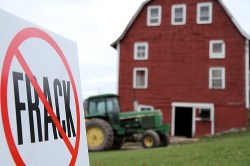
Photo by Not An Alternative.
Internationally, fracking has encountered stiff opposition over water pollution and other environmental concerns. Bulgaria and France have banned the practice, the United Kingdom and Romania have suspended it, and still more countries in Europe are considering the moratorium route. South Africa slammed the brakes on shale gas exploration in 2011, but it lifted its moratorium on fracking in September 2012.
Here in the States, the practice has met resistance on the local level from groups concerned about possible (and still poorly understood) consequences for health, rural landscapes, ecosystems, and the final resting places of veterans. New York residents living near the northern border of the Marcellus Shale and within the Utica Shale region have been especially vocal in opposing fracking. More than 130 municipalities in New York State have enacted moratoriums or banned fracking outright. Pittsburgh banned natural gas drilling in 2010, becoming the first city in shale gas-rich Pennsylvania to do so.
So far, however, the winners in this fight are those who benefit from squeezing cash — er, gas — from shale. That includes not only energy producers but also landowners who lease surface or mineral rights and state and local governments that make millions in tax revenue. The boom has also made a good talking point for politicians touting their contributions to national energy independence. And it’s one more sign that we’re hell bent on getting every ounce of fossil fuel the earth has to offer, never mind the long-term risks.

